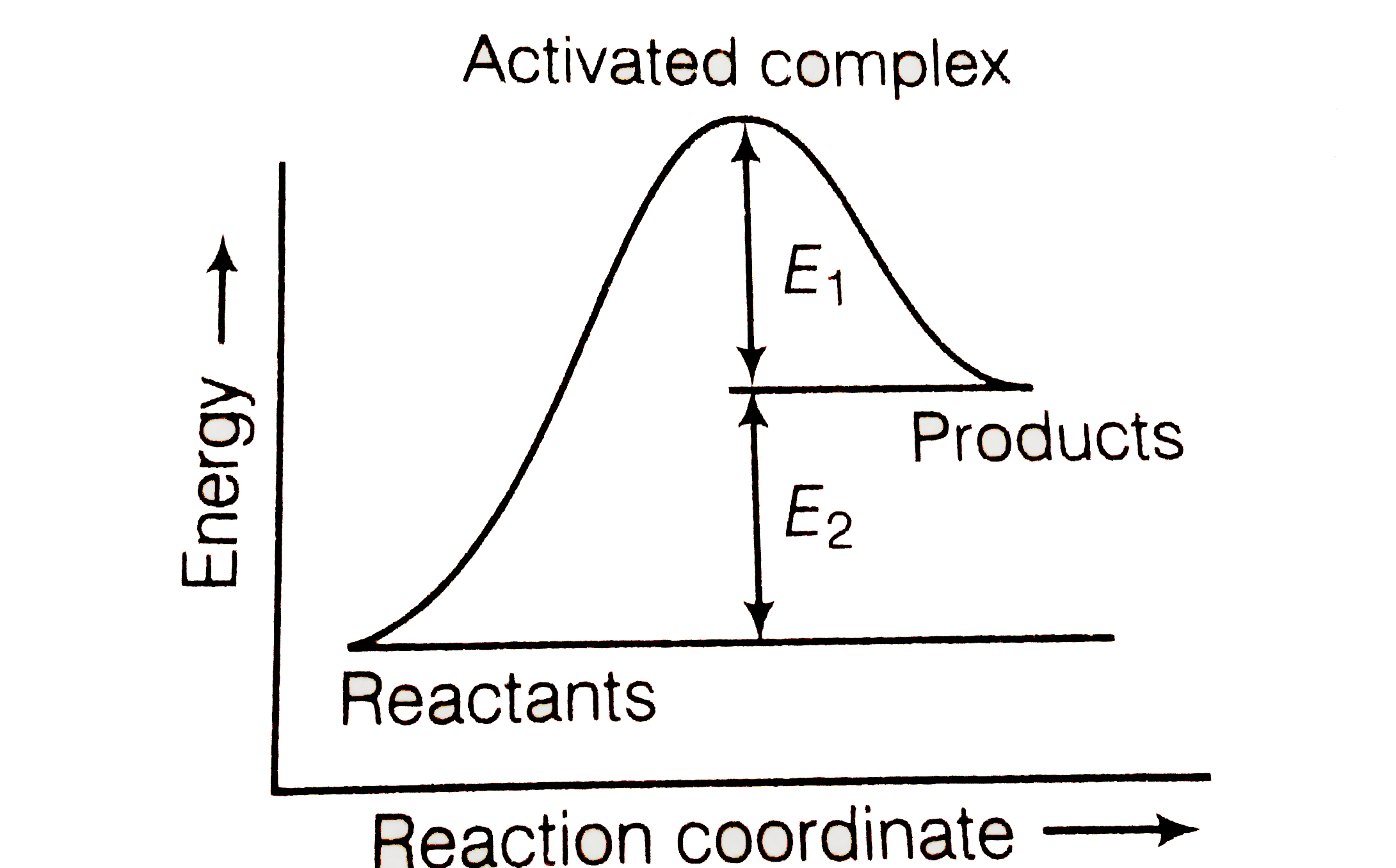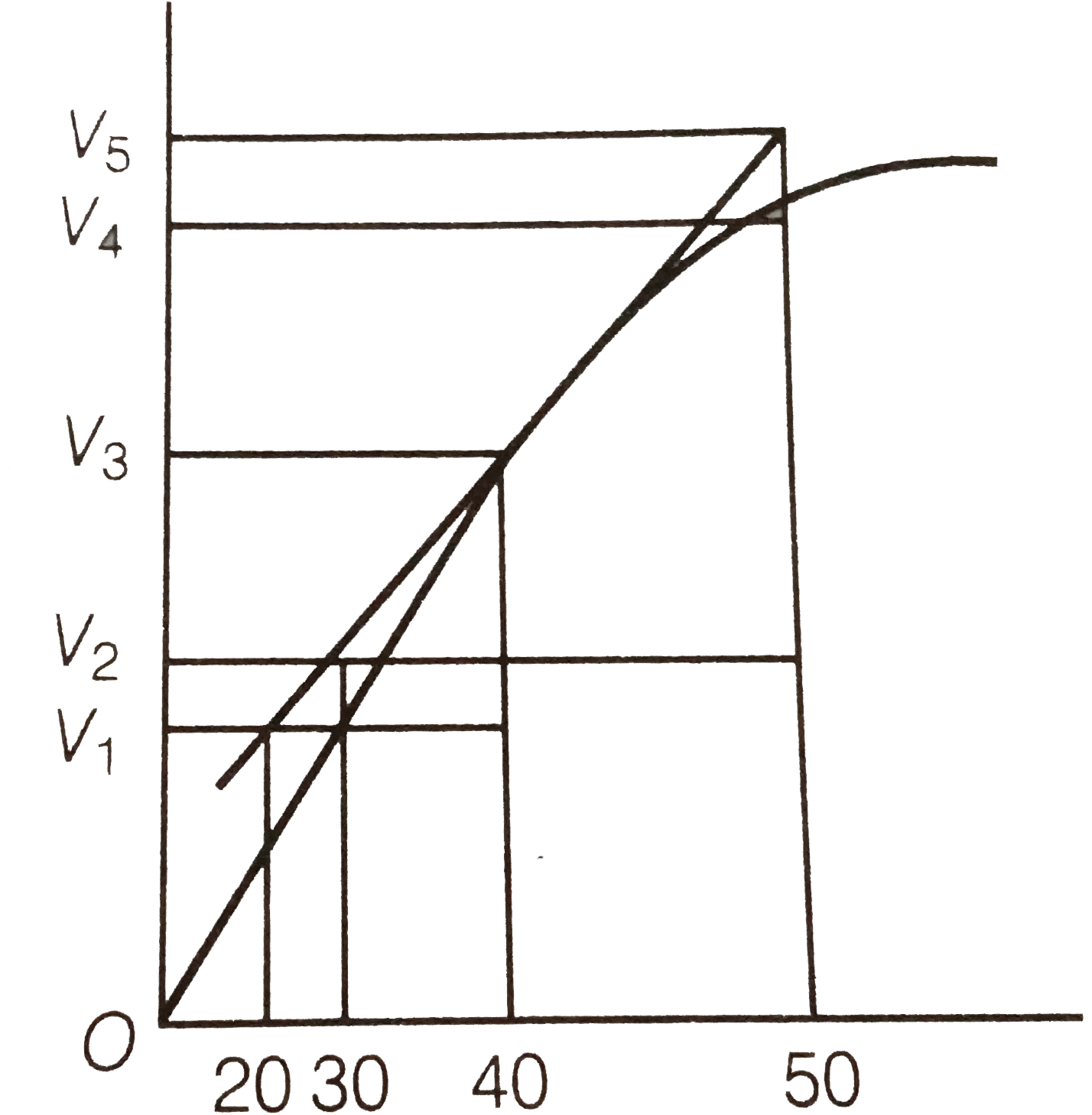Complete Solutions to EXERCISE -4 of chapter CHEMICAL KINETICS of Class 12 book with complete answers and questions
| Class 12 | CHEMISTRY |
| Chapter | CHEMICAL KINETICS |
| NARAYANA | EXERCISE -4 |
| Number Of Questions | 30 |
| Academic Year | 2023-24 |
The role of a catalyst is to change
View SolutionIn the presence of a catalyst, the heat evolved or absorbed during the reaction:
View SolutionActivation energy of a chemical reaction can be determined by:
View SolutionConsider figure and mark the correct option

View SolutionConsider a first order gas phase decomposition reaction given below:
`A(g) to B_(g) + C_(g)`
The initial pressure of the system before decomposition of A was `p_(i)`. After lapse of time `t'`. Total pressure of the system increased by x units and became `P_(t)`. the rate constant k for the reaction is given as
View SolutionAccording to Arrhenius equation rate constant K is equal to A `e.^(-E_(a)//RT)` . Which of the following options represents the graph of ln K vs `(1)/(T)`?
View SolutionConsider the Arrhenius equation given below and mark the correct option.
`k=A e^(-(Ea)/(RT)`
View SolutionWhich of the following statement is not correct about order of a reaction ?
View SolutionConsider the graph given in figure . Which of the following options does not show instantaneous rate of reaction at 40 ?

View SolutionWhich of the following statements is correct?
View SolutionWhich of the following expression is correct for the rate of reaction given below ?
`5Br^(-)(aq) + BrO_(3)^(-)(aq) + 6H^(+) (aq) to 3Br_(2) (aq) + 3H_(2) O(l)` .
View SolutionRate law for the reaction, `A + 2B to C` is found to be
Rate `= k [A] [B]`
Concentration of reactant 'B' is doubled keeping the concentration of 'A' constant, the value of rate constant will be _______
View SolutionWhich of the following statements is incorrect about the collison theory of chemical reaction?
View SolutionA first order reaction is `50%` completed in `1.26 xx 10^(14)`s. How much time would it take for `100%` completion?
View SolutionWhich of the following statements is not correct for the catalyst?
View SolutionThe value of rate constant of a pseudo first order reaction
View SolutionConsider the reaction `A to B`. The concentration of both the reactants and the products varies exponentially with time. Which of the following figure correctly describes the change in concentration of reactants and products with time ?
View SolutionThe time for half-life period of a certain reaction, `A rarr` products is `1 h`. When the initial concentration of the reactant `'A'` is `2.0 "mol" L^(-1)`, how much time does it take for its concentration to come from `0.50` to `0.25 "mol" L^(-1)`, if it is zero order reaction ?
View SolutionThe rate of a chemical reaction doubles for every `10^(@)C` rise of temperature. If the temperature is raised by `50^(@)C`, the rate of the reaction increases by about
View SolutionA reactant (A) forms two products `A overset(K_(1)) to B`, Activation energy `E_(a1)A overset(K_(1)) to C` , Activation energy `E_(a2)` If `E_(a1) = 2E_(a2)` , then `K_(1)` and `K_(2)` are related as
View SolutionFor a reaction `1//2A to 2B`, rate of disappearance of A is related to the rate of appearance of B by the expression:
View SolutionFor the reaction A + 2B + C`to`D+2E the rate equation is rate =`K[A][B]^(@)[C]` then the rate is
i) Doubled when [A] is doubled keeping B and C constant
ii) Doubled when [C] is doubled keeping A and B constant
iii) The same when [B] is doubled keeping A and C constant
iv) Doubled when |B] is doubled keeping A and C constant.
The correct combination is
View SolutionThe acid hydrolysis of ester is: (i) first order reaction (ii) bimolecular reaction (iii) unimolecular reaction (iv) second order reaction The true statements are
View SolutionWhich of the following statements are correct: (i) law of mass action and rate law expressions - are same for single step reaction
(ii) the slowest step of a complex reaction gives the order of the complex reaction
(iii) both order and molecularity have normally a maximum value of 3
(iv) m olecularity of a com plex reaction `A + 2B to C` is 3
View SolutionConsider the following reactions at 300 K.
A `rarr` B (uncatalysed reaction)
`Aoverset("catalyst")rarrB` (catalyst reaction)
The activation energy is lowered by `8.314"KJ mol"^(-1)` for the catalysed reaction. How many times the rate of this catalysed reaction greater than that of uncatalysed reaction?(Given `e^(3.33)=20)`
View SolutionA substan ce undergoes first order decomposition. The decomposition follows two parallel first order reaction as:

The percentage distribution of B and C are
View SolutionThe rate of the reaction between haemoglobin (Hb) and carbon monoxide (CO) was studied at`20^(@)` C - The following data were collected with all concentration units in `mu` mol /L (A haemoglobin concentration of 2.21 `mu` mol/L is equal to `2.21 xx 10^(-6)` mol/L )

Determine the orders of this reaction with respect to Hb and CO and rate constant
View SolutionConsider following (1) and (2):

The order of reaction and the value of rate constants is:
View SolutionGraph between log k and `1/T` is a straight line with `OX =5, tan theta 1/(2.303)`. Hence `E_(a)` will be

View SolutionIn a first order reaction the concentration of product ’x’ at time 't' is given by the expression (a=initial concentration, k=rate constant, n=order)
View Solution
EXERCISE -4 questions and complete solutions for chapter CHEMICAL KINETICS of NARAYANA CHEMISTRY (HINGLISH) of Class 12
All Exercises from NARAYANA Class 12 CHEMISTRY CHEMICAL KINETICS
- CHECK YOUR GRASP
- CUQ (RATE OF REACTION)
- EVALUATE YOURSELF - 1
- EVALUATE YOURSELF - 2
- EVALUATE YOURSELF - 3
- EVALUATE YOURSELF - 4
- EVALUATE YOURSELF - 6
- EXAMPLE
- EXERCISE -1 (C.W) (COLLISION - THEORY)
- EXERCISE -1 (C.W) (HALF-LIFE)
- EXERCISE -1 (C.W) (MOLECULARITY)
- EXERCISE -1 (C.W) (ORDER OF REACTION)
- EXERCISE -1 (C.W) (RATE OF REACTION & FACTORS)
- EXERCISE -1 (H.W) COLLISION THEORY
- EXERCISE -1 (H.W) HALF LIFE
- EXERCISE -1 (H.W) MOLECULARITY
- EXERCISE -1 (H.W) ORDER OF REACTION
- EXERCISE -1 (H.W) RATE OF REACTION & FACTORS
- EXERCISE -2 (C.W) COLLISION THEORY
- EXERCISE -2 (C.W) HALF LIFE
- EXERCISE -2 (C.W) ORDER OF REACTION
- EXERCISE -2 (C.W) RATE OF REACTION & FACTORS
- EXERCISE -2 (H.W) (HALF LIFE)
- EXERCISE -2 (H.W) (ORDER OF REACTION)
- EXERCISE -2 (H.W) (RATE OF REACTION & FACTORS)
- EXERCISE -2 (H.W) COLLISION THEORY
- EXERCISE -3
- EXERCISE -4